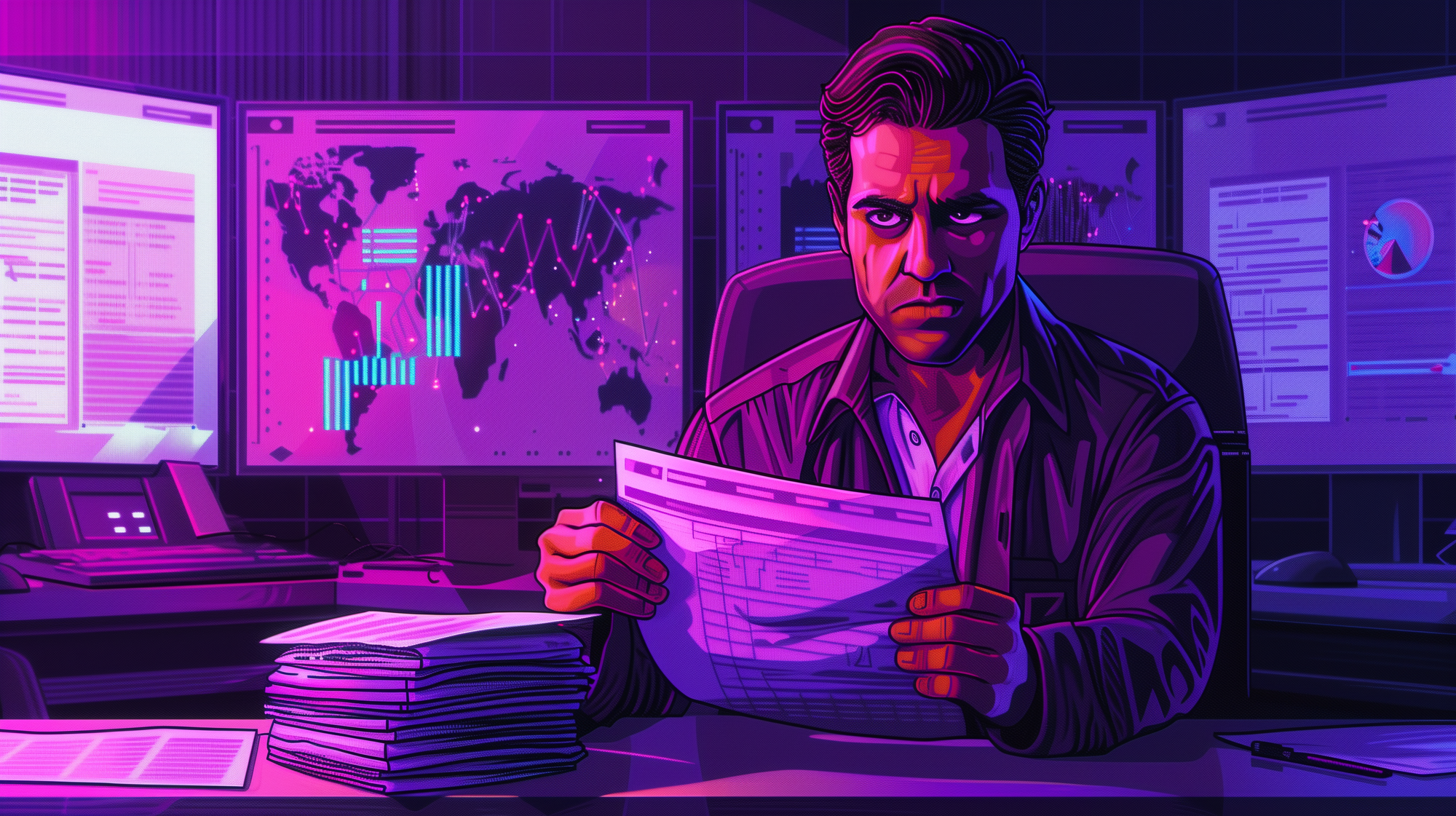
Deconstructing the CTI Industrial Complex, Part 3: Knowledge Cartel
Access is a mirage in the world of cyber threat intelligence. What appears as visibility is tightly rationed. What is framed as exclusivity is manufactured scarcity. Intelligence is not shared to protect. It is hoarded to control. The few decide what the many are allowed to see.
Part Two exposed the illusion of handcrafted intelligence and the rise of automation hidden behind bloated price tags. It revealed a theater of deception where generative machines write what vendors sell as artisanal reporting. But automation is only one layer of the con. The greater manipulation lies in who controls access, who shapes the narrative, and who decides what intelligence is allowed to exist. That is where the cartel emerges.
Deconstructing the CTI Industrial Complex Series
What exists today is not a transparent or equitable model for the distribution of cyber threat intelligence. It is a cartel. A closed circle of vendors who monopolize global telemetry, hoard visibility, and tightly control access to the threat landscape. They decide what becomes a report. They decide what is important. And they decide who gets to see what and when.
This is not about defending customers. It is about managing narratives and maximizing revenue.

Collection Without Consequence
These vendors sit on oceans of telemetry collected from endpoint agents, network sensors, honeypots, email feeds, and customer submissions. And yet only a fraction is ever analyzed. The rest is left to rot. The crumbs of a Doritos bag treated as if they represent the full meal. Vast amounts of data are wasted, forgotten, or deliberately ignored because analyzing it would not serve the vendor's internal roadmap, marketing calendar, or political comfort zone.
No one receives the full picture. No one receives full attribution. There is no such thing as a real report. There are just products curated to look complete while omitting anything that would provoke risk, liability, or geopolitical discomfort. Some vendors offer enhanced access through shared remote or dedicated on-site analysts, but this is not a solution. It is an upsell. Customers are forced to pay absurd fees for a human proxy who pulls down answers on request. It is a concierge model for information that should be immediately available but is hidden behind human bottlenecks and artificial barriers.
And looming above it all are the legal departments. They do not protect truth. They protect vendor interests. They act as the final censor on what intelligence is allowed to be published. Their job is not to enable transparency but to suppress anything that could offend a government, a regulatory body, or a top ten percent customer. Reports are gutted of detail not for national security but for corporate liability. What remains is a shell of what the analysis could have been. The risk of telling the full truth outweighs the commitment to serve those who need it.
This is not an intelligence-sharing model. It is information gatekeeping disguised as value.
This cartel does not just limit access. It limits progress.

Access as Illusion
The consequences of this control are not limited to what gets analyzed or published. They extend to how customers are treated, how access is priced, and how visibility is rationed. The same cartel hoarding telemetry and censoring truth also dictates who is worthy of intelligence and at what cost. And it is not just information they are selling. It is an illusion.
Of course vendors should charge for their products. No sane person would argue otherwise. Freemium models are weak mechanisms for converting users into paying customers. From entry-level subscriptions to premium services, pricing tiers are to be expected. That is not the issue. The problem is how those tiers are constructed, how they are marketed by sales teams, and how access is controlled with surgical precision. Customers are led to believe that each price increase brings deeper visibility, richer insight, and closer proximity to the vendor's inner sanctum. In reality, they are climbing a ladder that leads to nowhere.
The paywall does not reward expertise. It is built to restrict it. It creates the illusion of exclusivity while distributing nearly identical material behind different price tags. The most expensive tiers include an intelligence analyst dressed up as a customer success manager. These so-called elite analysts rarely provide proactive support. They wait for questions. They respond with vague commentary. They do not deliver tactical recommendations unless specifically asked, and even then, the answers are often redirected into overpriced bespoke reporting. The service may be expensive, but what the customer receives is rarely unique.
The myth continues behind the scenes. What customers believe to be elite analytical attention is, in many cases, work outsourced to interns, junior hires, or recent graduates stationed continents away from the customer. These individuals often lack any familiarity with the customer's mission, industry, geopolitical context, or even language. Yet they are tasked with interpreting threat activity, formulating guidance, and pretending to provide value. This is not a failure of talent. It is a failure of respect. It is the outsourcing of responsibility in pursuit of margins. The customer thinks they are speaking to experience. In reality, they are speaking to what essentially amounts to nothing more than a human script.
This structure thrives by manipulating expectations. Access is framed as a privilege rather than a product. Customers are sold the idea that they are part of an elite group. They are not. They are simply higher-paying participants in a closed system where the value is imagined and the exclusivity is engineered.
Even organizations granted premium access are not immune to the failure. Customers with subsidiaries across different geographies face fragmented visibility due to legal constraints, inconsistent portal access, or vendor-imposed licensing limits. Intelligence arrives late. Global security teams are forced to coordinate across time zones with different tiers of access, often discovering their threat intelligence rights differ from one business unit to the next. What should be a force multiplier becomes a source of confusion. The cartel does not reward loyalty. It punishes scale.

Performance as Product
Vendor legal teams introduce yet another filter. Intelligence outputs are not only scrubbed for security purposes. They are also cleansed to avoid upsetting influential partners. Reports are not reviewed to improve their quality. They are reviewed to preserve relationships. Governments with vendor ties are never criticized. Top-paying and politically powerful customers, particularly those aligned with dominant Western institutions, are not to be offended. Pressure from these establishments loom large over what can be said, what must be omitted, and what will never be acknowledged. Every sentence is examined. Every conclusion is diluted. Cyber threat intelligence becomes public relations, not honest analysis.
At the foundation of it all sits the vendor growth strategy. The paywall is built to fuel constant cross-sell and upsell opportunities. Cyber threat intelligence becomes bait for more services, more features, and more embedded analysts. Rarely do these additions deliver real value. Customers leave. They churn. They realize the intelligence is no deeper than what they had before. They were not upgraded. They were only monetized.
This is not a premium offering. This is a con hidden inside enterprise software.
The architecture of control is complete. Customers pay more and receive less. Vendors grow larger while delivering less. Analysts work harder and are valued less. Intelligence, once a tool for defense, is now a product for performance. The cartel is not collapsing. It is calcifying. And the cost is paid by everyone on the outside looking in.
In Part Four we turn away from power centers and look toward those left behind. Not the buyers in boardrooms but the defenders on the periphery. The teams in Southeast Asia, the Middle East, Africa, Latin America, and other geographies who are expected to pay full price while being given half the picture. Their silence is ending. Their reckoning is near.

Support Praeryx Content
Are you passionate about advancing your understanding of cyber security and cyber threat intelligence, and want to see more in-depth, thought-provoking content like this? Consider supporting Praeryx in our mission to educate and empower with a donation directly contributing to the continued creation of valuable resources and insights, helping Praeryx to provide impactful and timely content. Join us in building a more secure digital future by donating today!
Donate to Praeryx





